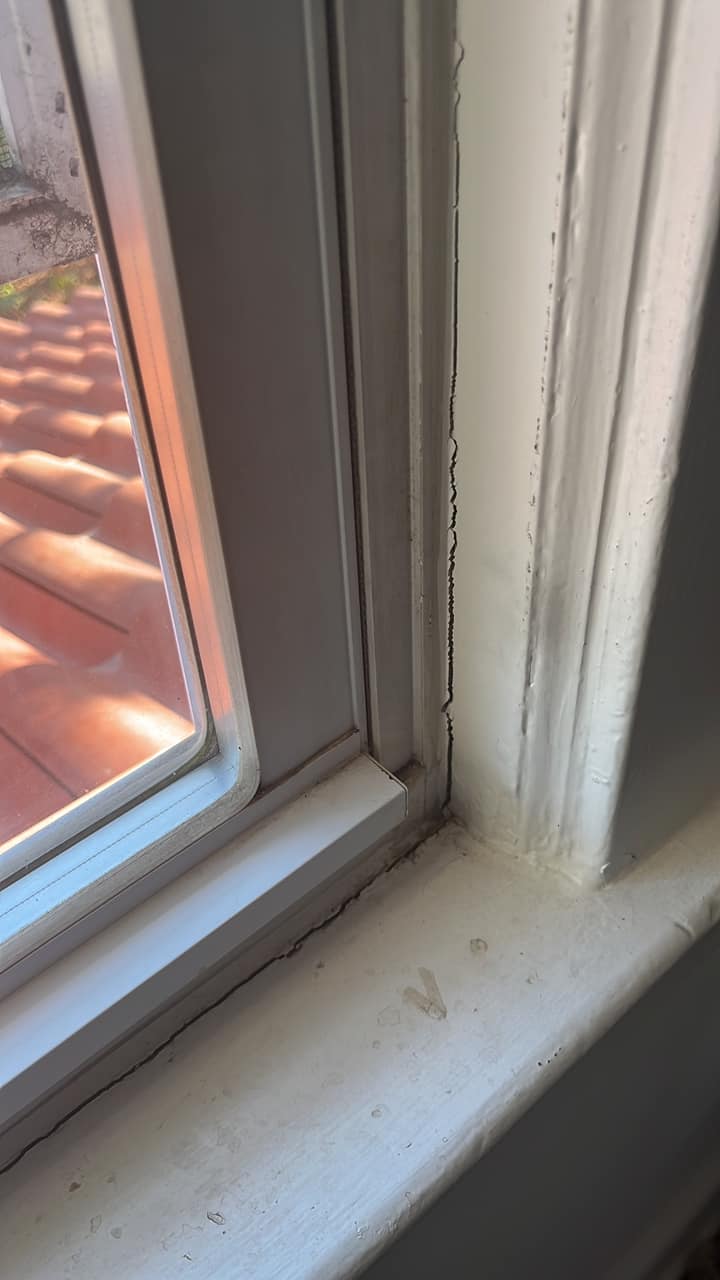How can I repair the cracks between the vinyl windows and wooden sill in my 1923 house without breaking the bank with over 14 windows to fix?
1 year ago
Last Updated: May 28, 2024
We’re currently living in a 1923 house and slowly trying to show it some much-needed love. Most of the windows are old vinyl and we don’t have any plans to replace them just yet. However, there seems to be a crack between the window and the wooden stool on almost every window. I’m not sure if it’s due to moisture or something else. The first picture is the worst, while the second one might just need some new caulk.
Another thing to mention is the aluminum trim outside of each window, which looks pretty bad. I’m worried that it might be causing the issue and it could be a costly fix, especially since we have over 14 windows and I would need to hire someone to do it.
Any advice would be greatly appreciated.



Remove any loose debris and dirt to ensure a strong bond. Get rid of the old caulk and reapply with a paintable latex window caulk. There are plenty of helpful tutorials on caulking windows available on YouTube. It might be a good idea to also check the caulking on the outside.
Go ahead and climb out there to caulk any visible openings. Honestly, it could simply be due to condensation and the accumulation of moisture over time
Unfortunately, the most problematic window is located three stories up with no roof access. (The picture shows the second window, which is in better condition). We may need to include this in our to-do list for our handyman/painter. Thank you, !
Make sure to always keep the weep holes open and clean out the tracks
Had no idea weep holes even existed! I’ll need to do some research and start cleaning!
Oh no, we just realized we don’t have any weep holes!! Is that a common oversight? 😳
-Glick no, the cement/stucco window sill might be blocking them
-Glick if the windows are sealed shut, rainwater can accumulate on the track and seep inside
Oh boy, , that doesn’t sound good at all.
The rain hitting the roof and bouncing off the window can be tough on them. Make sure to inspect weep holes, caulk, and the flashing above the window. Water seeping into the window can cause the wood in the wall to rot.
I suggest taking out the stool to check for any water damage on the framing components. An 11/16 x 5 1/4 inch stool is relatively inexpensive and easy to replace if necessary. As others have suggested, seal all openings on the exterior and regularly clear drain weep holes. If your stucco siding is EIFS, it is susceptible to water penetration and may be the cause of the issue
Hey Shane, I appreciate your suggestions. By the way, I’m not sure how to determine what type of stucco we have. Any ideas on how to figure that out?
-Glick, that’s a great question! EIFS is an External Insulation Finishing System that uses foam insulation board and nylon mesh on the wall before applying the base coat. Traditional stucco, on the other hand, is made from natural materials like cement, sand, water, and limestone, and is applied over a base layer of waterproofing material and galvanized lath. Both systems have their pros and cons, but EIFS is generally more difficult to install correctly, leading to potential water intrusion issues. Identifying whether your siding is traditional or EIFS stucco can be tricky since it’s a sealed system. Sometimes, you can see the foam board if you remove a doorbell or light fixture, indicating a sealing issue. It’s important to consider all variables when dealing with water leaks, as it may not necessarily be the siding causing the problem. For example, structural damage can be caused by something as seemingly minor as a shifted window pane due to house settling.
You might want to consider removing that window bottom board, also known as the bottom seal. Just be cautious when prying it up. Begin at the bottom and gently lift it a bit. Then carefully pull it towards you. Make sure not to harm the sides. Purchase a 1by6 and use the old seal as a template to cut the new seal. Secure it with finish nails, apply paintable caulk, and paint over it. Repeat this process multiple times
Awesome, I can manage that!! Thank you very much!!
-Glick just go slow. It’s pretty simple. The important thing is not to harm the drywall or the window frames. You might need to use a utility knife to remove the old caulk before trying to remove it
If you suspect water is entering from the outside, remember to seal all the trim around your windows both on the outside and inside. When painting the exterior of your home next time, consider using a stucco paint like elastomeric paint that is sold in paint stores, not box stores, as it waterproofs the surface
I wouldn’t recommend removing the bottom board unless it’s rotted. Just scrape off any loose paint, sand the board really well, apply paintable window caulking around the window, and then paint the trim with paint that includes primer
Be cautious with loose paint chips if your house is really old (especially if you have children or pets). Paint prior to the 1980s contained lead. If a child or pet ingests the paint chips, they could be at risk for lead poisoning.
Hey , thanks for the heads up, I got it!